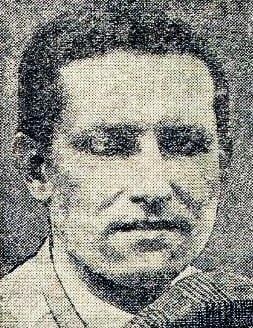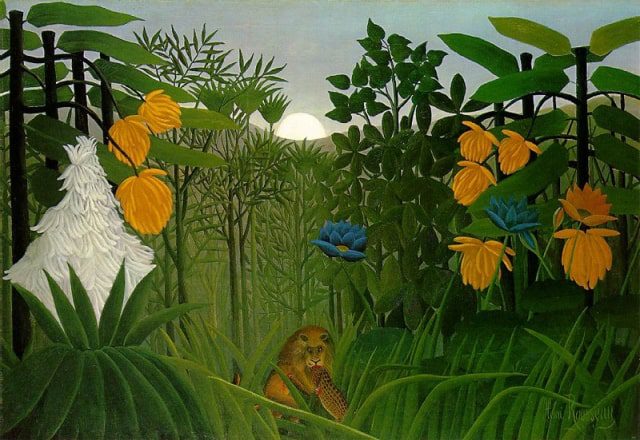Top 5 Interesting Facts about the French Max Fourny
Max Fourny was a French art collector, publisher and motor racing driver. He also opened the Montmartre museum Musée d’Art Naïf – Max Fourny! A race car driver that also loved art?! What a cool guy!
I had never heard of Max Fourny until I visited the Musée d’Art Naïf – Max Fourny, and since then I’ve done my research to discover more about him. Keep reading for my top 5 interesting facts about the French Max Fourny!
Practical Information
Musée d’Art Naïf – Max Fourny
Entry fee: 9 euros
Opening hours: You can visit everyday between 10am and 6pm
Address: 2 rue Ronsard, 75018 Paris
Metro station: Anvers / Anvers / Barbes-Rochechouart
1. Max Fourny started racing in cyclecars

Example of a cyclecar that Max Fourny may have driven. The 1912 Bédélia BD-2 cyclecar by AlfvanBeem – WikiCommons
Born in Amiens, France in 1904, Max Fourny began working as a race car driver in the 1920s. He began by driving a type of race car called the cyclecar. These types of cars were advertised as being an inexpensive solution to something in between a motorcycle and an automobile. Think those stylish older cars that are really low to the ground, with massive wheels, and you’ve got the cyclecar!
With the creation of the automobile in the late 19th century, people were looking for options that were affordable. Race car drivers were also looking for cars that were lighter and therefore faster! The cars were first used for racing in 1913 in a race organized by the Automobile Club de France, and then again for the Cyclecar GP in Le Mans in 1920.
The cyclecar boom didn’t last very long, they were in production from 1911 until the early 1920s.
2. Max Fourny is a prize winning race car driver
Fourny was most successful in his racing career in the 1930s. He began racing in Bugattis when the cyclecar trend ended! He won first prize in 5 different races between 1930 and 1934, notably in the Grand Prix de Picardie in Picardie, France and the Grand Prix du Maroc in Morocco.
He came in second place in 2 races, fifth place in 2 races, and seventh and eighth place in 2 different races, respectably. He drove a Bugatti in at least 10 races!
It’s safe to say that Fourny had a very successful career as a race car driver. The last race he participated in was in 1947. One of the reasons that I find Fourny so interesting is that he made such a complete change in careers once he retired from racing! From 1945 to 1955, he published an art magazine!
3. Max Fourny published an art magazine
Once Fourny had said adieu to race car driving, he immersed himself in the art world! His art magazine was called Art et Industrie, and the magazine focused on the art, art schools, different art movements at the time, and the magazine itself was filled with beautiful illustrations! The magazine also published pieces on interior design, and artists profiles.
Fourny also participated in the creation of the magazine Prisme des Arts, a monthly review of contemporary art. He then also helped to create another magazine, the Direction de l’Art International.
It’s clear that Fourny threw himself into the world of art and art magazines with as much passion as he had for racing!
4. Max Fourmy created a museum inside his home
In 1973, Fourny decided to create an art museum in his home in his country house in Vicq, a small town located just outside Paris. His collection included over 900 pieces of art that he had collected through his travels over the years.
Fourny collected mostly naïve art. This type of art is characterised as art produced by artists that have had no formal training. Fourny was also fond of folk art and outsider art, which are similar to naïve art. The difference between naïve art and outsider art and folk art is that naïve and outsider styles aren’t necessarily inspired by a certain culture or place in the world.
Today, you can view Fourny’s collection in Montmartre at the Musée d’Art Naïf – Max Fourny, and the Musée international d’art naïf in Vicq.
5. Max Fourmy’s art collection can be seen in Montmartre
If you find yourselves in Montmartre (I hope you do!), you can head to the Musée d’Art Naïf – Max Fourny to see Fourny’s amazing collection! It’s permanent collection features 516 paintings, 80 sculptures, paper creations, textiles, and other artworks that are set under glass.
The museum was opened by Fourny in 1986, before this death in 1991. It is located in the Halle Saint-Pierre, literally just next door to the carousel at the base of the Sacre Coeur! The Halle Saint-Pierre is a really cool place in itself: it features the museum, a café, a bookstore, and the structure is beautiful. It’s the perfect place to spend an afternoon if you ask me!
The museum is nestling in between three bustling areas of Montmartre. Of course, the Sacre Coeur and the many steps that lead up to it, the Boulevard Barbès with its many African restaurants and street vendors, and the rue André del Sarte, which is known for it’s many interesting boutiques.
Head to the Musée d’Art Naïf – Max Fourny and make a day out of it by exploring Montmartre, you won’t regret it.
Conclusion
I hope I have inspired you to check out the Musée d’Art Naïf – Max Fourny after reading this short biography on the former race car driver/arts supporter! I would have loved to have a conversation with Max Fourny, I’m certain he would have had some amazing stories about his interesting life.
Do you want to discover Montmartre with one of our Discover Walks guides?! If you want to see Paris from the perspective of a local, your answer should be yes! Click here to read up on our Montmartre tour options, and all of our Paris walking tours.
Planning a trip to Paris ? Get ready !
These are Amazon’s best-selling travel products that you may need for coming to Paris.
Bookstore
- The best travel book : Rick Steves – Paris 2023 – Learn more here
- Fodor’s Paris 2024 – Learn more here
Travel Gear
- Venture Pal Lightweight Backpack – Learn more here
- Samsonite Winfield 2 28″ Luggage – Learn more here
- Swig Savvy’s Stainless Steel Insulated Water Bottle – Learn more here
Check Amazon’s best-seller list for the most popular travel accessories. We sometimes read this list just to find out what new travel products people are buying.













